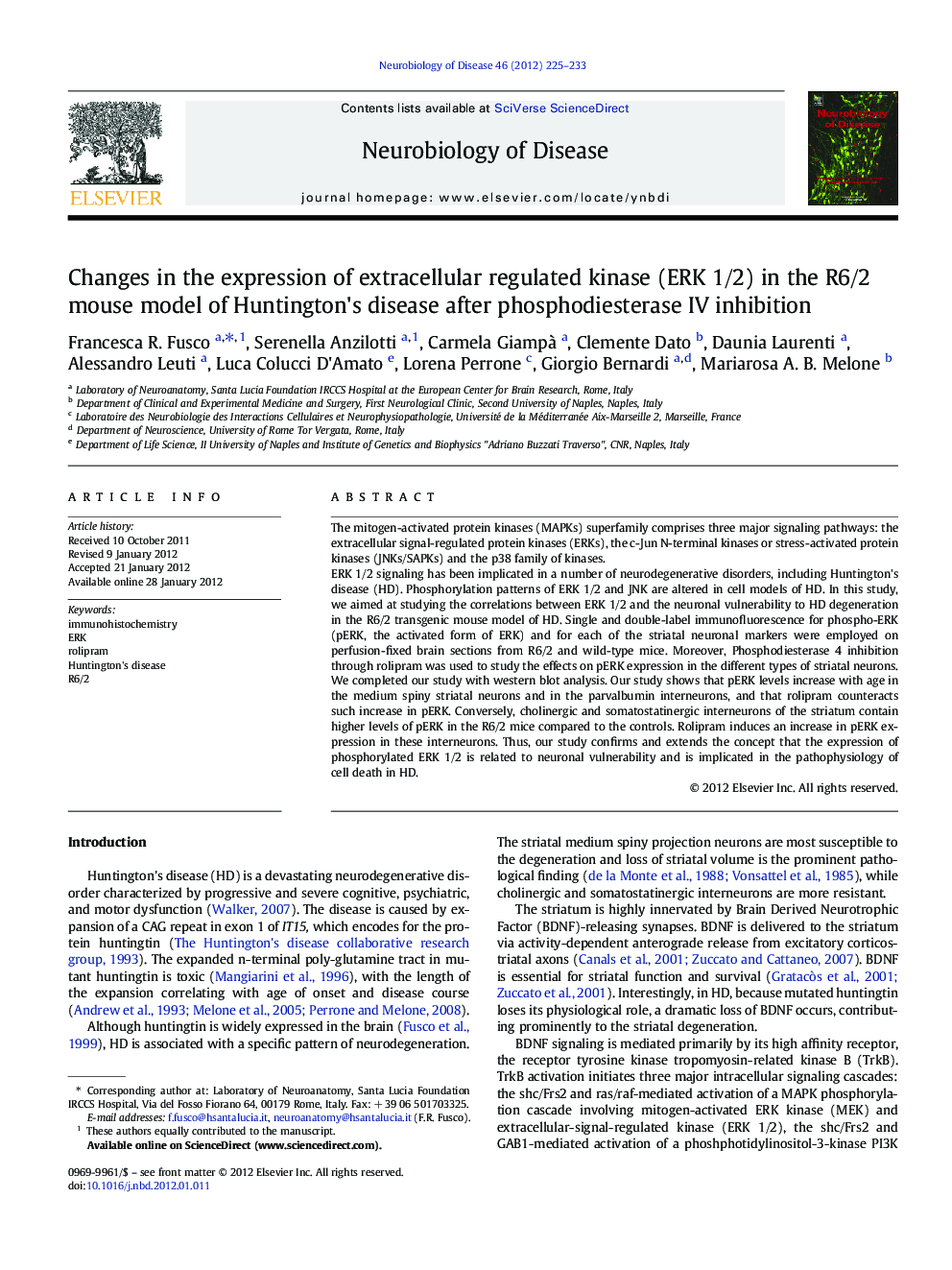| Article ID | Journal | Published Year | Pages | File Type |
|---|---|---|---|---|
| 3069503 | Neurobiology of Disease | 2012 | 9 Pages |
The mitogen-activated protein kinases (MAPKs) superfamily comprises three major signaling pathways: the extracellular signal-regulated protein kinases (ERKs), the c-Jun N-terminal kinases or stress-activated protein kinases (JNKs/SAPKs) and the p38 family of kinases.ERK 1/2 signaling has been implicated in a number of neurodegenerative disorders, including Huntington's disease (HD). Phosphorylation patterns of ERK 1/2 and JNK are altered in cell models of HD. In this study, we aimed at studying the correlations between ERK 1/2 and the neuronal vulnerability to HD degeneration in the R6/2 transgenic mouse model of HD. Single and double-label immunofluorescence for phospho-ERK (pERK, the activated form of ERK) and for each of the striatal neuronal markers were employed on perfusion-fixed brain sections from R6/2 and wild-type mice. Moreover, Phosphodiesterase 4 inhibition through rolipram was used to study the effects on pERK expression in the different types of striatal neurons. We completed our study with western blot analysis. Our study shows that pERK levels increase with age in the medium spiny striatal neurons and in the parvalbumin interneurons, and that rolipram counteracts such increase in pERK. Conversely, cholinergic and somatostatinergic interneurons of the striatum contain higher levels of pERK in the R6/2 mice compared to the controls. Rolipram induces an increase in pERK expression in these interneurons. Thus, our study confirms and extends the concept that the expression of phosphorylated ERK 1/2 is related to neuronal vulnerability and is implicated in the pathophysiology of cell death in HD.
► We studied the pERK expression in the striatal neurons of the R6/2 model of HD. ► MSN and PARV interneurons contain more pERK than cholinergic and NOS interneurons. ► Rolipram decreases pERK in MSN and PARV neurons. ► Rolipram increases pERK in the more resistant cholinergic and NOS interneurons. ► pERK is related to neuronal vulnerability and is implicated in the pathophysiology of cell death in HD.
